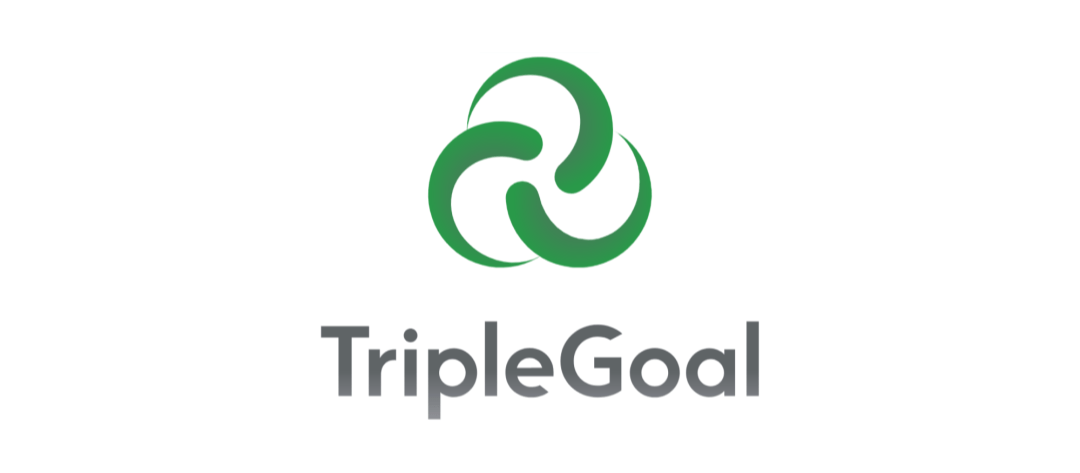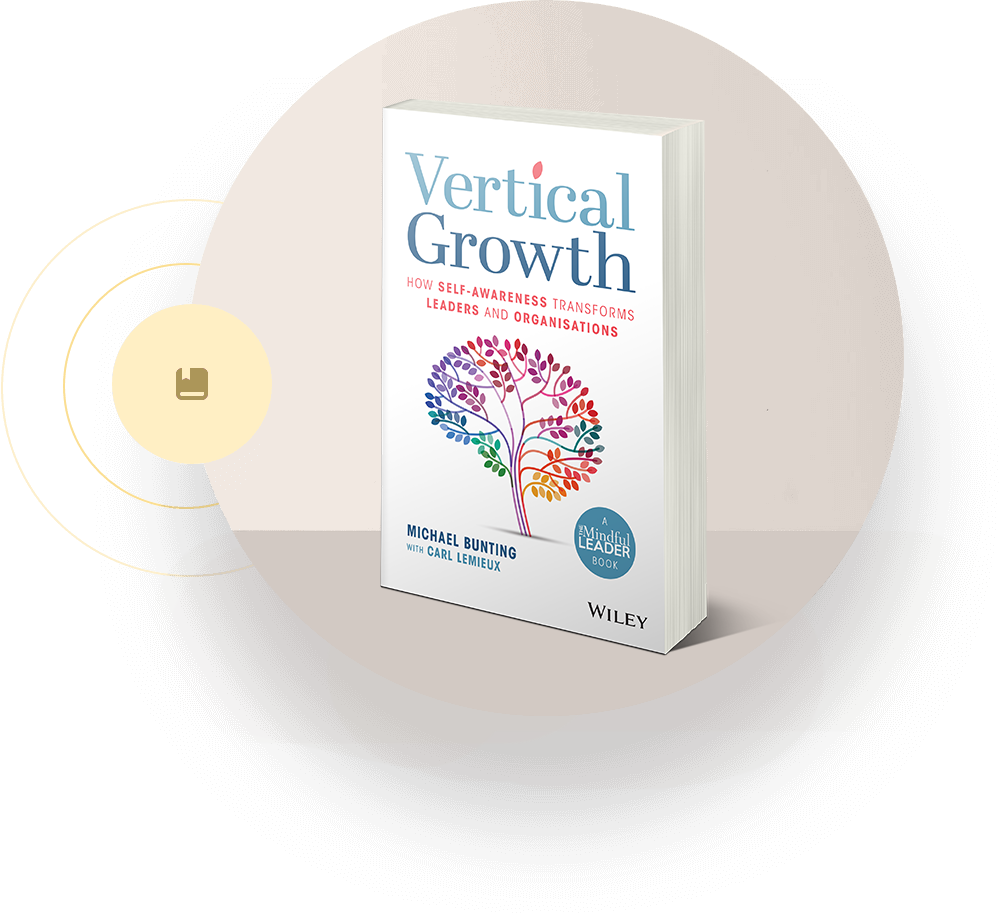The Triple Goal Explained: A Framework Designed for Modern Leadership
From the increasing instability of global markets to the rapid pace of technological innovation, business leaders face an overwhelming array of responsibilities and challenges.
They must produce results with surgical precision while guiding teams through continuous change and keeping morale high. Gone are the days when simply “hitting targets” was enough. Leadership today requires a multifaceted approach that balances performance, growth, and culture.
While many leadership models attempt to tackle one or two of these needs, few integrate all three in a holistic and sustainable way.
This is where the Triple Goal framework comes in.
It seamlessly weaves together the pursuit of high-level outcomes, a need for ongoing growth, and the creation of authentic workplaces where people feel genuinely engaged and appreciated.
Rather than pitting performance against well-being or learning, The Triple Goal emphasises all three – recognising that true excellence happens when they reinforce each other.
For organisations that want to overcome the myriad challenges of a modern business landscape, this approach isn’t just relevant – it’s fundamental.
Breaking Down the Triple Goal
The Triple Goal is a holistic leadership framework that helps leaders excel in three interdependent domains:
Great Performance
Achieving consistently high standards, delivering against organisational objectives, and ensuring long-term, sustainable success.
Great Learning
Fostering a culture of continuous development, curiosity, and adaptability among both leaders and their teams.
A Great Workplace
Creating an environment where employees feel valued, engaged, and motivated to do their best work – day in and day out.
While each pillar has its own merits, the real power of The Triple Goal emerges when these three elements reinforce one another.
Think of them as three legs of a stool. If one is too short or missing entirely, the stool wobbles and becomes unstable.
A high-performing organisation that neglects learning and culture can achieve short-term gains but will likely face disengagement, high turnover, and burnout over time.
Conversely, an organisation with a fantastic culture and a love for learning but no focus on performance will struggle to meet its objectives and grow in a competitive market.
By bringing these three pillars together, The Triple Goal framework empowers leaders to navigate complexity with clarity. Instead of treating performance, learning, and culture as competing priorities, leaders recognise them as interlinked drivers of long-term success.
1. Great Performance: More Than Just Results
In many companies, “performance” is practically synonymous with numbers on a spreadsheet – sales targets, revenue goals, or operational metrics.
While these metrics are crucial, The Triple Goal recognises that true performance is broader and more sustainable. It includes how leaders achieve those numbers, how their actions affect the company’s long-term growth, and how they manage and inspire the people involved in delivering results.
Key Principles of Great Performance
Clarity of Vision:
Leaders must articulate a clear, compelling vision that resonates at every level of the organisation. This involves setting measurable and achievable goals while explaining the “why” behind them. When people understand the purpose, they’re more motivated to meet objectives.
Accountability and Ownership:
High-performing teams don’t just do tasks – they take ownership. Leaders foster accountability by assigning responsibilities clearly and trusting team members to deliver. This trust builds confidence and encourages teams to push boundaries.
Strategic Adaptability:
Change is the new normal. Leaders must be prepared to pivot quickly – whether due to market shifts, unexpected challenges, or emerging opportunities. A strategic approach means having contingency plans, scanning the market for trends, and staying agile.
Measuring Success Beyond Numbers:
Revenue, market share, and KPIs are essential, but qualitative measures like employee engagement, customer satisfaction, and brand reputation also reflect performance. Leaders who incorporate these broader insights can anticipate issues and adapt before they become crises.
High-Trust Teams:
Trust is the bedrock of peak performance. When people feel safe sharing ideas and taking calculated risks, breakthroughs happen. Conversely, environments driven by fear or blame smother creativity and foster complacency.
Balancing Short-Term Wins with Long-Term Goals:
Quarterly earnings reports may be critical, but not at the expense of strategic growth or organisational culture. Effective leaders find ways to secure immediate wins that align with a grander vision for sustainable success.
While these principles are essential, high-trust, values-aligned performance can be difficult to measure – especially when it involves the nuanced behaviours that shape team culture and leadership impact.
The Leadership Growth Profile helps address this challenge by surfacing blind spots and behavioural patterns through 360° feedback, giving leaders a clearer understanding of how their values-driven actions influence outcomes.
2. Great Learning: The Competitive Advantage
Organisations that rest on yesterday’s successes quickly lose relevance. In a landscape where startups disrupt entire industries overnight, continuous learning isn’t a bonus – it’s a survival strategy.
Yet, some leaders make the mistake of assuming learning is limited to formal training sessions. In reality, learning must be woven into the daily fabric of leadership and team practices.
Hallmarks of a Great Learning Culture
Curiosity and Open-Mindedness:
Leaders who ask questions and seek out diverse perspectives set the tone for an inquisitive culture. This environment encourages employees to challenge the status quo and explore new ideas.
Learning from Mistakes:
In a truly innovative environment, failure is seen as a step toward success, not a career-ending misstep. Leaders should invite discussions around “lessons learned” and celebrate calculated risks – even if they don’t all pan out.
Resilience in the Face of Change:
Learning includes emotional resilience – being able to bounce back, reflect, and grow after setbacks. Resilient teams stay engaged and proactive under pressure.
Role Modelling:
Leaders who demonstrate continuous learning – by reading, attending workshops, or seeking mentorship – encourage their teams to follow suit. It’s not enough to say learning is important; leaders must exemplify it.
Knowledge-Sharing and Collaboration:
Silos kill organisational learning. Encouraging cross-functional projects, peer mentoring, and open dialogue fuels creativity and collective problem-solving.
When leaders prioritise learning at every level – from personal development to team skills – they create a virtuous cycle. Teams become more adaptable, morale improves, and performance naturally elevates.
In this environment, new hires quickly assimilate, existing employees stay motivated, and the organisation as a whole remains agile and competitive.
3. A Great Workplace: The Engine of Engagement
A great workplace is more than free coffee or casual Fridays. It’s an environment where people feel psychologically safe, respected, and empowered to do their best.
While many leaders believe they are inclusive or empowering, data from our Leadership Growth Profile often reveals a gap between intention and impact. These blind spots, once visible through 360° feedback, become powerful opportunities for growth and more authentic, trust-based leadership.
Research consistently shows that companies with engaged, satisfied employees outperform those with lower engagement on profitability, customer ratings, and innovation.
Core Elements of a Great Workplace
Psychological Safety:
First coined by Harvard researcher Amy Edmondson, psychological safety refers to a team climate in which individuals feel comfortable being themselves. They can speak up, ask questions, or admit mistakes without fear of ridicule or retribution.
Meaningful Recognition:
People want to be appreciated for their efforts, not just their outcomes. Simple gestures like public acknowledgements, handwritten thank-you notes, or a genuine “well done” can go a long way in boosting morale and loyalty.
Purpose-Driven Leadership:
Employees who understand how their work contributes to a bigger picture are more motivated and engaged. Leaders should consistently communicate the organisation’s mission and values, tying day-to-day tasks to the broader vision.
Flexibility and Work-Life Integration:
With remote and hybrid work models becoming the norm, organisations that embrace flexibility often enjoy higher employee satisfaction and retention. Leaders can set policies that value results over “face time” and trust employees to manage their schedules effectively.
Inclusive Leadership:
Diversity and inclusion are not just ethical imperatives – they’re business imperatives. Teams that include varied perspectives solve problems more creatively. Inclusive leaders seek out different viewpoints, ensure equitable opportunities, and foster an environment of mutual respect.
Strong Internal Communication:
Transparent communication from the top down (and vice versa) builds trust. It helps employees feel informed about the organisation’s direction, challenges, and opportunities.
The Triple Goal in Action: A Tale of Two Leaders
Leader A: The Reactive Style
Leader A lacks self-awareness and avoids accountability when projects go awry. They have a tendency to micromanage, discourage feedback, and are overly focused on short-term results.
While their team may hit targets initially, morale rapidly declines. The culture becomes one of fear, where employees hesitate to speak up or suggest improvements. Over time, top talent turnover increases, and innovation grinds to a halt.
Leader A’s approach leads to toxic workplace behaviours, a lack of collaboration and accountability, and an inability to deal with change effectively.
Leader B: Triple Goal Aligned
Leader B values transparency, team input, and continuous learning. They set clear performance goals but also ensure employees have room to grow and learn from mistakes.
By creating a psychologically safe environment, they encourage innovation and collaboration. Team members feel appreciated, leading to higher engagement and lower turnover. Performance remains strong because employees are motivated to continuously improve.
Leader B’s approach is sustainable and resilient – when challenges arise, the team is united in problem-solving rather than playing the blame game.
The contrast between Leader A and Leader B highlights the tangible impact of The Triple Goal.
While Leader A might see short-term success, their leadership style ultimately proves unsustainable.
Leader B, by focusing equally on performance, learning, and culture, creates a high-performing, adaptive team ready for the long haul.
The Leadership Growth Profile: Your Map to The Triple Goal
In an era of complexity and competing demands, the most effective leaders are those who can see themselves clearly and lead with intention. The Triple Goal offers a powerful North Star – but to move towards it with purpose, leaders need a mirror.
That’s what the Leadership Growth Profile provides: deep behavioural insight grounded in over two decades of research and adult development theory. It surfaces the patterns, blind spots, and strengths that shape a leader’s everyday impact – helping them align their values with how they lead across performance, learning, and culture.
For leaders committed to building high-performing, values-driven teams and thriving workplaces, the Leadership Growth Profile offers a practical, evidence-based path forward.
To start your journey towards great performance, great learning, and a great workplace, discover the Leadership Growth Profile here.








